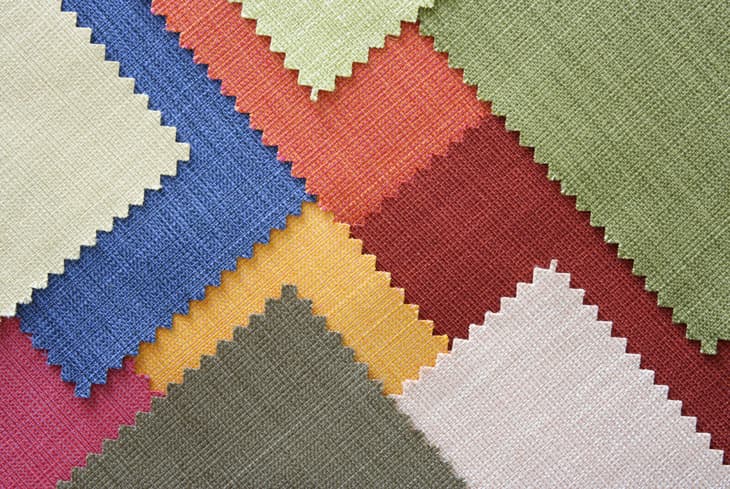In the 12th century, mercery, which comes from the French word ‘mercerie’, referred to linen, textile, silk, and fustian that were imported to England among other different piece goods. The main trade center for silk was in London, meaning this trade had a remarkable place among the rich, back in the time.
Do you want to get in contact with draper and fabric suppliers in Iran?
Get in contact with fabric suppliers in Iran now
In the 13th century in England, a dealer who usually sold or bought pricey fabrics and clothes was called a mercer. Later, they changed their name from mercer to draper. It is good to know that there is a mere difference between a mercer and a draper. A draper is a person who mostly sells clothes (a dealer in clothes); while a mercer is actually a merchant who deals fine and expensive cloths like textile, fabric, silk, etc.
For over 700 hundred years, mercery was most commonly a family business, requiring a mercer, a businessman, some servants, some apprentices if it was a vast business, and an entrepreneur to lead this group. The husband's duty was to run the family's workshop, meaning he had the products taken to the storefronts in public fairs by servants and sold to people. The wife was typically in charge of buying materials for mercery and using her abilities to make piece goods and various silk cloths, but she also ran the workshop in the absence of her husband and trained the apprentices during the process of making goods. Obviously, nowadays, everything has changed a lot, since humans are replaced with machines and we only need a delivery system from the factories to diverse companies and stores.
Different types of fabric:
1. Chiffon:
A plain-woven, lightweight fabric made from twisted yarn. The yarn itself is made of polyester, silk, rayon, or nylon. Chiffon is mostly used in prom dresses, blouses, scarves, and wedding gowns because it can be effortlessly dyed.
2. Cotton:
Cotton is one of the most popular materials in the world due to its versatility, comfortableness, and durability. It can be used in a diverse variety of clothes such as dresses, underwear, shirts, and shorts. Although it breaths well, drying late and its desire for shrinking and wrinkling are some of the disadvantages of cotton.
3. Crepe:
Crepe is also a lightweight fabric that has a rough surface that does not wrinkle and is mostly made of silk and cotton. Since it is versatile, factories use it in scarves, skirts, and blouses.
4. Denim:
Another fabric made from cotton is famous for its unique vivid texture. They often dye it with indigo in order to manufacture blue jeans and jackets with it.
5. Lace:
Back in the time, lace used to be made with cotton, linen, and silk; but now, cotton threads are used for creating it. Since the process of making and designing a soft, transparent lace is time-consuming, it is known to be a luxury textile. Lace is used in designing bridal gowns and veils.
6. Leather:
A unique, wrinkle-resistant, stylish type of fabric that is made from the skin of cows, lambs, crocodiles, and snakes. The price varies based on the animal’s skin. As leather keeps the body warm, it is found in belts, shoes, and jackets.
7. Silk:
Silk is the most luxurious natural fabric in the world. On one hand, it is the strongest and most durable fabric, but on the other hand, washing it is so hard that it is recommended to dry clean or hand wash silk. Shantung and Kashmir are two of the most well-known silk types. Skirts, shirts, suits, lingerie, wedding gowns, scarves, and ties are some kinds of clothes in which silk is used.
Silk is a natural protein fiber mainly composed of fibroin which is produced by some specific insect larvae and could be woven into a textile. The best type of silk which has been being used immensely for manufacturing textile is the silk of moth caterpillar.
8. Velvet:
Velvet is another expensive fabric. The hard process of producing it also increases the price. It could be made from nylon, cotton, linen, and silk. This real gentle fabric is sometimes associated with royalty. Generally, they use it for making blouses, coats, shirts, outwears and skirts.
Linen: Another type of textile is made from the fibers of the flax plant and is called linen. Linen has many profitable advantages:
It dries faster than cotton due to its unique airflow amongst the other cloths.
Linen is so absorbent; so you can easily clean up liquids with it.
And it is so strong and does not tear off or rot easily.
Alongside all these profits, linen’s tendency for wrinkling could be really annoying, depending on the situation. Though, its history returns to thousands of years ago, as it was mentioned in the bible, and used in ancient Egypt; linen still has a lot of fans and is widely used in the clothing industry.


